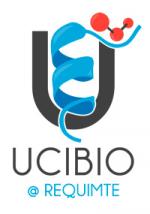Construction and analysis of a sequence-ready map in 4q25: Rieger syndrome can be caused by haploinsufficiency of RIEG, but also by chromosome breaks approximate to 90 kb upstream of this gene
- Citation:
- Construction and analysis of a sequence-ready map in 4q25: Rieger syndrome can be caused by haploinsufficiency of RIEG, but also by chromosome breaks approximate to 90 kb upstream of this gene, Flomen, {Rachel H. }, Vatcheva Radost, Gorman {Patricia A. }, Baptista {Pedro Miguel Ribeiro Viana}, and Groet Jürgen , Genomics, feb, Volume 47, Number 3, p.409–413, (1998)
Abstract:
The autosomal dominant disorder Rieger syndrome (RIEG) shows genetic heterogeneity and has a phenotype characterized by malformations of the anterior segment of the eye, failure of the periumbilical skin to involute, and dental hypoplasia. The main locus for RIEG was mapped to the 4q25-q27 chromosomal segment using a series of cytogenetic abnormalities as well as by genetic linkage to DNA markers. Recently, a bicoid-related homeobox transcription factor gene called RIEG has been cloned, characterized, and proven to cause the 4q25 linked RIEG. Its mode of action in the pathogenesis of RIEG was not conclusively proven, since most etiological mutations detected. In the RIEG sequence caused amino acid substitutions or splice changes in the homeodomain. Through FISH analysis of a 460-kb sequence-ready map (PAC contig) around RIEG that we report in this paper, we demonstrate that the 4q25 linked RIEG disorder can arise from the haploid, whole-gene deletion of RIEG, but also from a translocation break 90 kb upstream from the gene. The data provide conclusive evidence that physical or functional haploinsufficiency of RIEG is the pathogenic mechanism for Rieger syndrome. The map also defines restriction fragments bearing sequences with a potential key regulatory role in the control of homeobox gene expression.
Notes:
n/a

